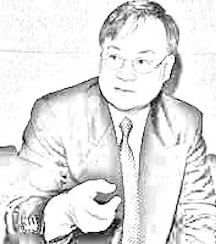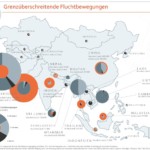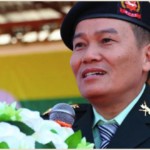By Sai Wansai / Shan Herald Agency for News | May 23, 2018
When the New Mon State Party (NMSP) and Lahu Democratic Union (LDU) signed the Nationwide Ceasefire Agreement (NCA) on 13 February 2018, adding impetus for the first time to the 8 signatories Ethnic Armed Organizations (EAOs) that have already inked the same agreement on 15 October 2015, hopes were high that at long last the peace process would begin to move forward again.
But the optimistic hope was dashed, as heightened military confrontation in Kachin and Shan States, coupled with political debacles stemming from the blockage or disruption of the state-level political dialogue or consultation meetings in ethnic states by the Military or Tatmadaw have hampered the atmosphere, so much so that the 21st Century Panglong – Union Peace Conference (21CP-UPC), popularly known as 21st Century Panglong (21CP), has to be postponed to either the end of June or early July, according to the sources from the government and EAOs.
The 21CP hasn’t been able to be held since over a year and repeatedly been postponed, even though it is supposed to take place twice a year according to NCA guidelines.
Quite a lot about the 21CP and the problems surrounding it have been reported since the peace process started in 2011, but very little is being publicized on the hope of the affected people on the outcome of peace process, projected solutions and what their aspirations actually are.
Peace process and hopes of the ethnic communities
In this respect The Centre for Peace and Conflict Studies’ “We Want Genuine Peace: Voices of communities from Myanmar’s ceasefire areas 2015” report covering the Kachin, Kayah (Karenni), Kayin (Karen), Northern Shan, Southern Shan, and Mon States has described the hope and solution envisaged by the people in these areas from the ongoing peace process quite explicitly, which is still applicable and valid until today.
Regarding the understanding of peace the report wrote: “In speaking about peace, most community members mentioned strong desires for “true”, “real”, “lasting”, or “sustainable” peace.”
A middle aged Ta’ang male tea leaf farmer from northern Shan State defined peace and his desire to be free as: “I don’t want a fragile peace. I just want to have peace in our country… People should not be the victim of the fighting anymore.”
Communities recounted negative experiences resulting from the presence of soldiers from the Tatmadaw or different EAOs and how violent conflict limited their freedom of movement, which in turn negatively affected their livelihood opportunities.
Most community members also expressed the hope that peace would bring higher standards of living through improvements in social service delivery, economic development, and better income generation opportunities, as could be seen by a middle-aged man from Kachin State statement: “If war breaks out in this region again, children’s education and regional development will be affected. In the future, we don’t want any communal or ethnic conflict. We want equal relationships and mutual respect for each other.”
According to a mature male Burmese merchant from Northern Shan State, “peace is not dependent upon armed groups alone. Peace has to be viewed from the side of the public. What the public needs has to be considered.”
To drive home the need for cooperation of the conflict parties, a middle-aged Karenni farmer from Kayah State highlighted: “The main thing I want to say is that lasting peace requires the government and armed groups to work together and implement the peace process in practice. If they can do so, people will trust both of them.”
Hopes from peace process outcomes and challenges that follow are numerous. They are the communities’ wish to be educated regarding the ongoing peace process from both government and EAOs point of view and also including public participation and consultation; education sector to be the main consideration in the peace process; upgrading healthcare; improvements in transportation infrastructure; recognition of economic hardship; drugs production, trade and addiction problems; ethnic, religious and gender-based discrimination; and problems relating to land confiscation in the context of infrastructure projects or large-scale development projects like mining, resource extraction, tourist or economic zone developments and so on.
In sum, “(f)rom Kachin State to Mon State, participants expressed their desire to be included in the peace process. They talked about wanting to support and contribute to the peace process as active citizens. however, communities felt that their lack of information and understanding about the peace process prevented them from getting more involved,” wrote the report.
A middle-aged Ta’ang male village elder from northern Shan State explained it more precisely and clearly, when he said: “In the peace process, we want them to discuss poverty reduction, rural development, power reduction, tax reduction, and corruption eradication in the meetings.”
Peace-building approaches of EAOs and government
However, the implementation if not the theoretical understanding of peace-building differ quite distinctly between the EAOs and the government.
“For most ethnic stakeholders, the primary need is for structural changes to the state and real autonomy for ethnic communities (usually expressed as an aspiration for constitutional federalism),” wrote Ashley South in Myanmar Times on 6 January 2014.
He added that historically that the Tatmadaw has opposed to such changes as threatening national unity. The then Thein Sein government sought to escape this thorny issue by focusing primarily on the humanitarian and development needs of ethnic communities, which the present NLD regime has also been following.
“The problem in Myanmar is not primarily a failing or weak state that needs to be strengthened or fixed, but rather an urgent need to re-imagine and negotiate state-society relations – and in particular mend relationships between the Bamar majority and ethnic nationality communities,” wrote Ashley South.
Anti-war movement
As the peace process stalled and the war in ethnic states, especially in Kachin and Shan States between the EAOs and the Tatmadaw escalated, so do the Internally Displace Person (IDP) population increased by 7400, adding to the nearly 100,000 refugees residing in various camps. And in the process of ongoing armed confrontation, IDPs were trapped in the jungles unable to flee for safety. In turn, some 5000 Kachins sought to pressure the authorities for the IDPs’ free passage through public protests in Myitkyina, Kachin State, which have spread out to other big towns and cities like Mandalay and Yangon across the country.
However, the demonstrations were contained by the government, charging some 50 demonstrators across the country for participating in antiwar activities this month and slapping them with lawsuits, using the undemocratic, controversial Peaceful Assembly and Peaceful Procession Law.
What now?
Whatever the political actors aimed to achieve, the crucial point is that it is the people that have to bear the brunt of the armed conflict and its ramification, whether it is arresting or cracking down of the anti-war demonstrators in Yagon, Mandalay and Myitkyina or IDPs caught up in firefights between the EAOs and Tatmadaw or trapped in the jungles of Kachin and Shan States.
And as such, governmental or non-governmental authorities have to mainly prioritize the re-establishment of citizen trust, trust of the institutions by the citizen, trust in one another, and trust in governing authorities.
“One of the best ways to establishing trust is to provide some kind of tangible benefit, which can be many things depending on what people need most. Often it is security; sometimes it is justice, but often also it is economic development. I think trust has to be established in relation to the issue that causes mistrust in the first place or where injustice is most deeply felt,” said Mr Nigel Roberts, Interim Director of the Technical Secretariat of the Joint Peace Fund to Mizzima in its 6 January 2018 report.
Thus, it is now quite clear that the wish of the ethnic nationalities and the Bamar majority wanted to end the war and don’t like to shoulder this decades-old internal conflict that is hindering reconciliation and development. All the warring groups now need to wake up to this reality and people’s desire and work accordingly to fulfill it, without asking the question of when and how.
This article originally appeared on SHAN on May 23, 2018.






![‘The Burma Army Killed Him [Saw O Moo] – At Least the Government or the Army Should Commit to Not Do This Again’: Paul Sein Twa, Executive Director of KESAN](https://www.burmalink.org/wp-content/uploads/2018/05/Saw-O-Moo-commemoration-Paul-Sein-Twa-speaking-2-150x150.jpg)